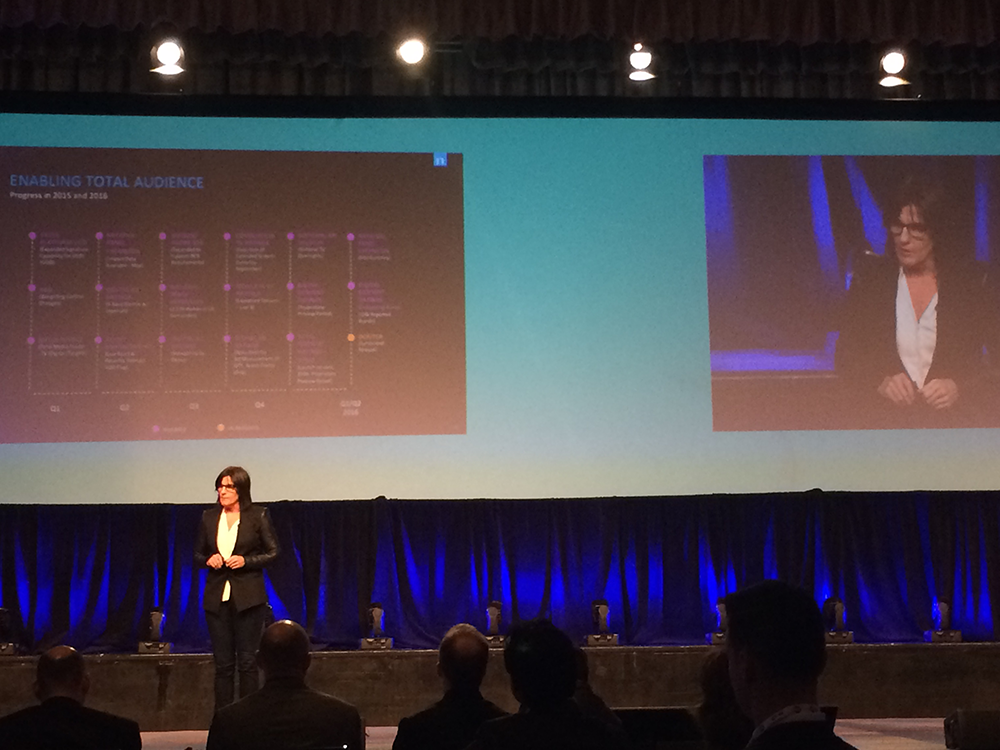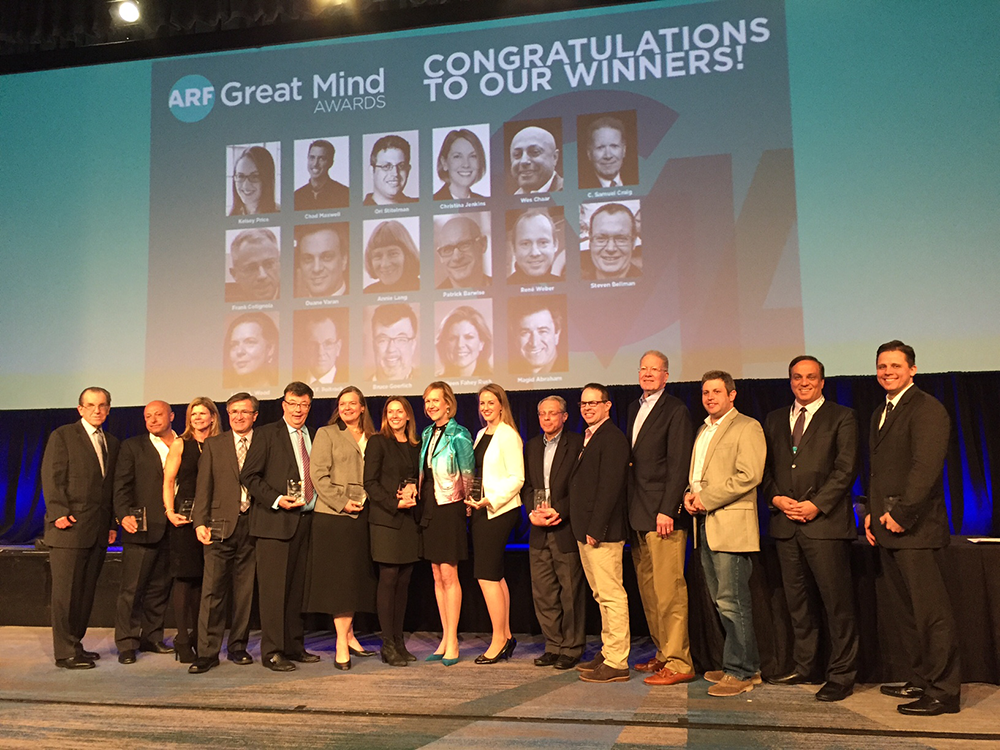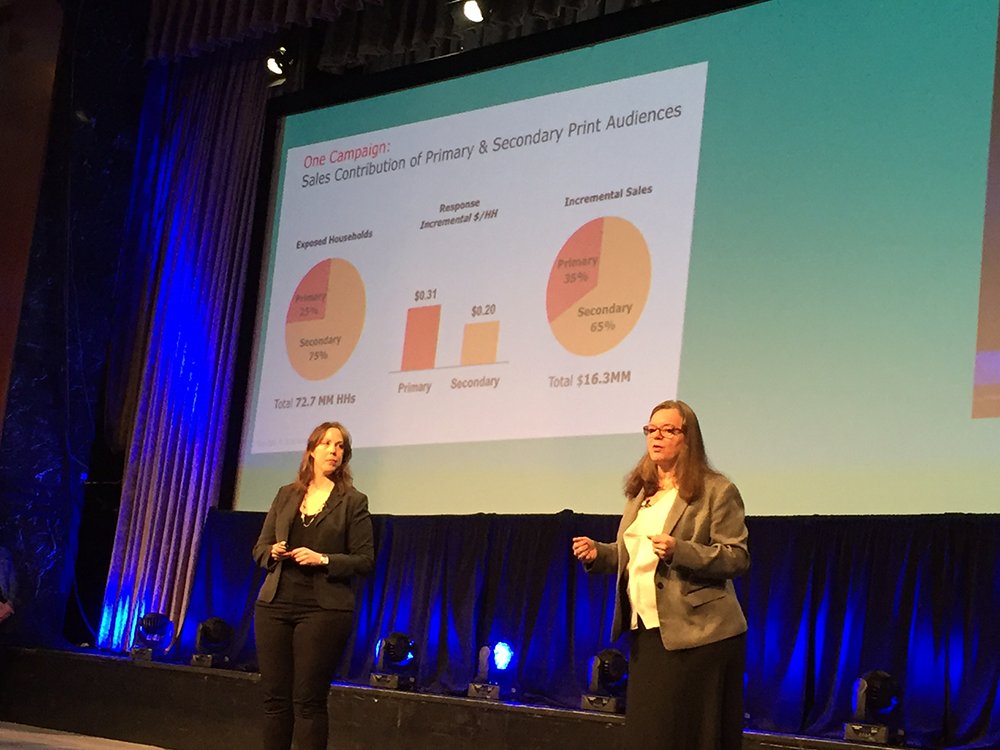This year, The Advertising Research Foundation’s (ARF’s) annual Re!Think conference focused on “How Advertising Works Today.” For Nielsen, that means measurement!
With that in mind, our “platinum” presence at the event featured a mainstage presentation of “Delivering the Total Audience” to over 500 audience members that included our clients and key industry collaborators, as well as Nielsen thought leaders speaking on topics ranging from measuring marketing ROI to measuring ad engagement with consumer neuroscience in several sessions across the three-day conference. And beyond our stage presence, over 90 Nielsen associates attended this key industry event that gathered together leaders and innovators in advertising, agency, media, ad tech and research.
Today’s audiences have more media options to choose from than ever before, and players across the media landscape—from networks and TV executives to agencies and advertisers—need to measure success across these platforms.
On the first day of the event, Megan Clarken, Nielsen’s president of product leadership, presented an update on our Total Audience measurement initiative, with a focus on how media companies can use comparable metrics to understand total viewing today. “Measurement is a team sport,” Clarken pointed out to the audience.
In that vein, the presentation then turned to focus on moving the market to total audience. Glenn Enoch, our senior vice president of audience insights, spoke about the seven principles across platform research: unique audience, unique audience percentage, average frequency, views, total time spent viewing, time spent per view and average time spent viewing. “We didn’t need metrics that divided and separated them, we needed metrics that brought them together,” Enoch said.
In addition to changing attitudes toward metrics, Enoch also spoke of the need to look beyond the seven days of live content as consumption patterns change over the course of the week. “We’re looking at live TV, DVR, VOD and digital consumption on PC and tablet. The consumption of content does not end at the end of the week,” he elaborated. “Over time, the way that people consume these programs changes. People turn to digital content to view the episodes that they missed on TV and DVR.”
But while measurements are evolving, that doesn’t necessarily mean they’re simplifying. In a deep dive presentation, Ross Link, Nielsen’s president of global marketing ROI solutions, advocated for a multi-model approach to marketing ROI measurement in his session, “Learnings from Digital Media Consortium II.” The DMC II was developed to improve industry practice in the precise measurement of digital media effectiveness. During the session, Link revealed that until single-source data is a reality, marketers should leverage store-level marketing mix modeling, particularly when looking to optimize ROI holistically across all business drivers.
Different types of measurement can help identify potential opportunities. During the session “Making the Most of March Madness,” Dr. Carl Marci of Nielsen Consumer Neuroscience and Turner Broadcasting showed how custom content continues to work best for sports advertising. Consumer neuroscience revealed that audiences’ content creation—such as social media posts—is dramatically lower than what they self-report: “One in three participants said they created their own content, but far fewer actually created anything.” Dr. Marci shared that 97% of audiences’ time spent on a second screen device were for consuming rather than creating content.

Exploring new measurement options is especially important to advance the advertising industry. Dr. Marci again took the stage on day two of Re!Think to discuss measuring the effectiveness of creative. This time he was joined by Leslie Wood, chief research officer of Nielsen Catalina Solutions, and David Poltrack, chief research officer of CBS and president of CBS Vision, for the CBS Platinum presentation, “New Breakthrough Research Theories Put Into Practice.” Using the full spectrum of Nielsen Consumer Neuroscience’s measures and Nielsen Catalina Solutions’ single-source data set, Dr. Marci and Wood presented research measuring the offline sales in total across various audience segments for the same pieces of creative.
The results and impact of this work proved innovative in advancing the field of creative evaluation and impact in the market place. “Part of what the evolution is about understanding the impact of everything, including how consumers experience that creative,” Marci remarked.
“The goal of every ad campaign is to be seen by as many consumers or potential consumers as close to the point of purchase as possible,” explained Wood. “Few advertisers achieve significant reach levels within a 48-hour span.” Wood also made clear, “Reach by definition has no timing element. Purchase-driven planning is able to extend reach to account for seasonality, timing and targeting. Most importantly, it provides the ability to predict alternative media schedules’ impact on ROI.”
Leslie Wood also participated in a deep dive discussions at Re!Think with Kraft Heinz and Time Inc. The session, “Cross-Platform Sales Measurement Has Arrived,” demonstrated a single-source approach to analyzing purchase and exposure data of households in TV, online, print and cross-media panels. The session concluded that the sales contributions for secondary magazine audiences can now be measured.
On the last day of the event, Leslie Wood and David Poltrack received a Great Mind Award for their work with “Measuring Long-Term Ad Effectiveness,” which scored the highest number of votes from the Journal of Advertising Research’s Senior Advisory Board and Editorial Review Board members.
Throughout the conference, the Nielsen Consumer Neuroscience exhibit booth provided attendees with a firsthand experience of our new Video Ad Explorer solution—integrating electroencephalogram (EEG), biometrics, facial coding, eye tracking and self-report technologies—for unprecedented insights.



